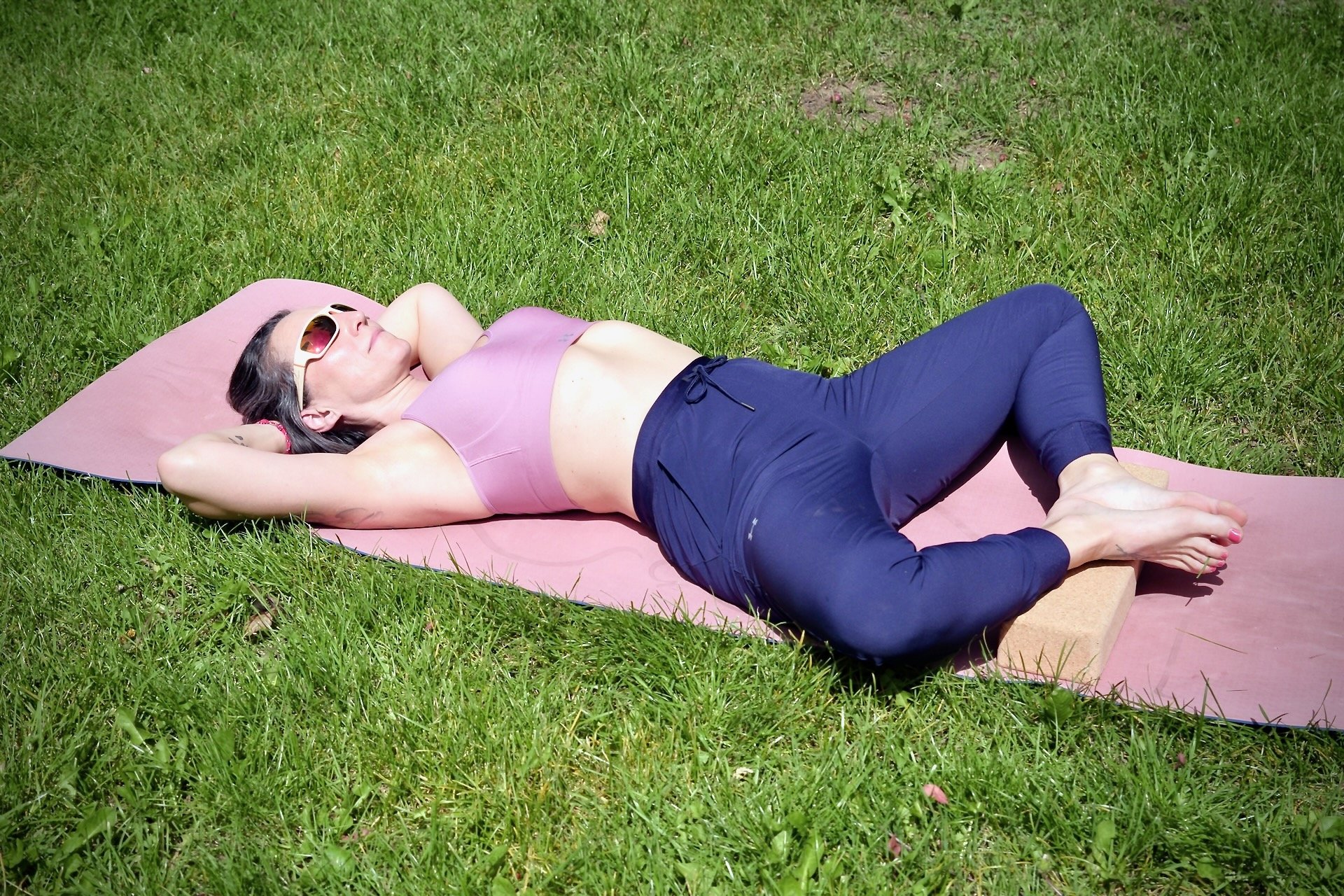Calming the mind
The journey towards meditation
Meditation is not just a trend or a buzzword; it is a profound practice that can transform your life. It is a journey towards inner peace, self-discovery, and mindfulness. If you have ever felt overwhelmed by the chaos of daily life or yearned for a deeper connection with yourself, meditation could be the answer you are seeking.
Starting a meditation practice does not require any special equipment or expertise. All you need is a willingness to sit with yourself, quiet your mind, and explore the depths of your consciousness. Whether you choose to focus on your breath, repeat a mantra, or simply observe your thoughts, the benefits of meditation are vast and undeniable.
So, if you have never considered meditation before, now is the perfect time to begin. Take a few moments each day to sit in stillness, breathe deeply, and let go of any tension or worries. Embrace the journey towards meditation, and you may find that it leads you to a place of profound peace, clarity, and serenity.
Let’s begin with the meaning of the word meditation:
“Meditation is a practice in which an individual uses a technique – such as mindfulness, or focusing the mind on a particular object, thought, or activity – to train attention and awareness, and achieve a mentally clear and emotionally calm and stable state.”
A Calm State of Mind: An Uncharted Territory
Different techniques are employed to attain a calm mind, raising the question - what truly constitutes a calm state of mind? Our minds, akin to unexplored worlds, remain largely enigmatic despite advancements in neuroscience. The complexity of our brains pales in comparison to the intricacies of our minds, each unique to the individual. Our minds encompass our thoughts, emotions, and physical reactions, elements over which we possess limited control. Attaining absolute tranquillity and quietude often proves elusive to many, highlighting the enigmatic nature of the mind and the perennial quest for inner peace.
Conquering the Calmness of Our Minds
In our quest to control our thoughts and emotions, we embark on a whole new journey. Today, I aim to share with you some tools that have aided me in this incredible adventure. Learning to master the calmness of our minds is a transformative process. Through practice and dedication, we can achieve inner peace and emotional stability. Join me as we explore methods to conquer the turbulence within our minds and nurture a sense of tranquillity in our lives.
Yoga has enlightened me in many senses, and I practice daily yoga in all aspects. Yoga is not only the postures. And to be able to meditate or reach Dhyana we need to successfully build and master the practices first. The 8 limbs of Yoga are there to help us built and achieve the desired focus.
1. Yamas (abstinences).
2. Niyamas (observances).
3. Asana (posture).
4. Pranayama (breathing).
5. Pratyahara (withdrawal)
6. Dharana (concentration)
7. Dhyana (meditation)
8. Samadhi (absorption).Dhyana, the practice of meditation, cultivates a heightened sense of awareness devoid of concentration, shifting our existence from constant action to a state of pure presence.
The best way I describe meditation is to become the observer and leave behind the doer.
The biggest lesson I have learn is to stop doing and start being. Being present in the moment, being present in your own body. Being present in your soul. Being present in your mind. Just observe without trying to do anything about it.
Absolutely! Meditation has been somewhat misrepresented in the Western world, leading to a lot of confusion over its true meaning and practice. It's vital to unravel the misconceptions surrounding meditation and restore its genuine essence.
Just call it a moment of introspection, a moment of presence without judgment, a moment of being without trying to do or to change anything.
In the silence of the mind, where words fade into whispers and thoughts slow their relentless dance, there lies a sanctuary of stillness—an oasis untouched by the chaos of the external world. Here, time surrenders its hold, and the soul finds solace in the gentle embrace of solitude.
In this sacred space of introspection, there is no need for masks or pretence. Here, vulnerability is not a weakness but a gateway to authenticity. We strip away the layers of expectation and obligation, baring our essence to the universe. In this rawness, we discover the beauty of our true selves—the light and the shadows dancing in harmony.
Without judgment, we observe our thoughts like passing clouds in the vast expanse of the sky. We witness our emotions rise and fall like waves on the shore, knowing that they are not us but merely visitors in the temple of our being. In this witnessing, we cultivate a sense of detachment that frees us from the grip of attachment.
Being present in the moment, we surrender the illusion of control. We release the need to fix, to change, to strive endlessly for an elusive perfection. Instead, we embrace the now with open arms, welcoming whatever arises with grace and acceptance. In this surrender, we find a peace that transcends understanding—a peace that resides in the very core of our being.
So let us linger in this moment of being, savoring the sweetness of presence without agenda. Let us rest in the stillness, allowing it to nourish our weary souls and replenish our spirit. And in this sacred pause, may we discover the infinite depths of our own divinity.
Yamas - What people can see:
Ahimsa: Be kind to oneself, respecting limits without causing harm.
Satya: Embrace authenticity while being still, free from self-judgment.
Asteya: Appreciate "us time" without feeling like it's wasted.
Brahmacharya: Utilise energy wisely, devoid of expectations.
Aparigraha: Release bits of material possessions and emotions daily.
Niyamas - What people cannot see:
Saucha: Purify inside and out, cleansing body, mind, soul, and heart.
Santosha: Find contentment and joy in existing circumstances.
Tapas: Uphold discipline in daily practices, returning to the mat consistently.
Svadyaya: Engage in self-study, deepening self-awareness.
Ishvara Pranidhana: Acknowledge limitations, drawing inspiration from the divine.
Asana: Engage in daily yoga postures, whether for 10 minutes or an hour, returning to the mat each morning and sometimes in the evening.
Pranayama (breathing): Incorporate conscious breathing into every exercise routine.
Pratyahara (withdrawal): let go of the senses and the physical body. Savasana is the perfect moment to let go and prepare for meditation. Never skip Savasana on your practice.
Dharana (concentration): Focus on an anchor, transitioning towards meditation by observing thoughts without interference, utilising aids like mantras or breath awareness with tools like a japa mala.
Dhyana (meditation): Shift into being a detached observer, reaching a state of silence and total surrender, having already let go in previous stages.
Samadhi (Absorption): I have never been able to reach this stage yet, since is an advance state of consciousness and union with the universe. Achieving the state of Samadhi is the ultimate goal for many Yogis, signifying complete detachment from the physical and material world. It is a profound state of consciousness where the Yogi unites with the universe, transcending the limitations of the body and mind. This advanced stage requires deep spiritual practice and unwavering dedication to the path of Yoga. While the journey towards Samadhi may be challenging, the rewards of spiritual enlightenment and union with the cosmos make it a revered aspiration for many practitioners.
So, to make it easier to start with meditation or your introspective moment try this simple practice:
As you wake up each morning, spend 5 minutes in bed to check in with yourself. Notice how your body and mind feel. Express gratitude for being alive another day. Take a few deep breaths and pay attention to your thoughts, dreams, and daily goals. Allow these thoughts to come and go without holding onto them.
Imagine yourself floating weightlessly, letting go of any tension or worry. Be present in the moment, free from judgement and expectations, like a blank white board. Return your focus to your body, feeling grounded and ready to start the day ahead. This simple morning routine can help you begin each day with mindfulness and positivity.
Quiet the mind and the soul will speak
I am proud and happy that I have managed after years of practice the stillness in my mind. Now I am not only capable of sitting in stillness but also being in stillness in my mind. I use this strategy in any moment of my day where I find myself being taken over by my mind. I pause and I become still. The power of stillness has become my superpower, and I truly encourage you to practice these moments of introspection where we stop to be and stop doing.


